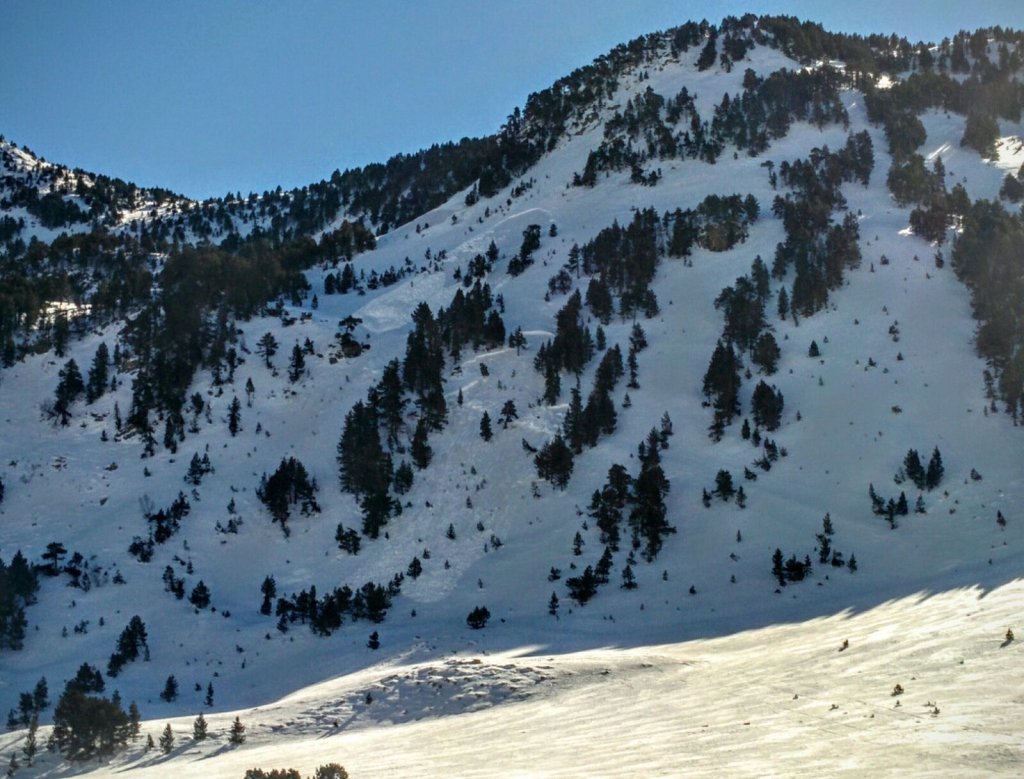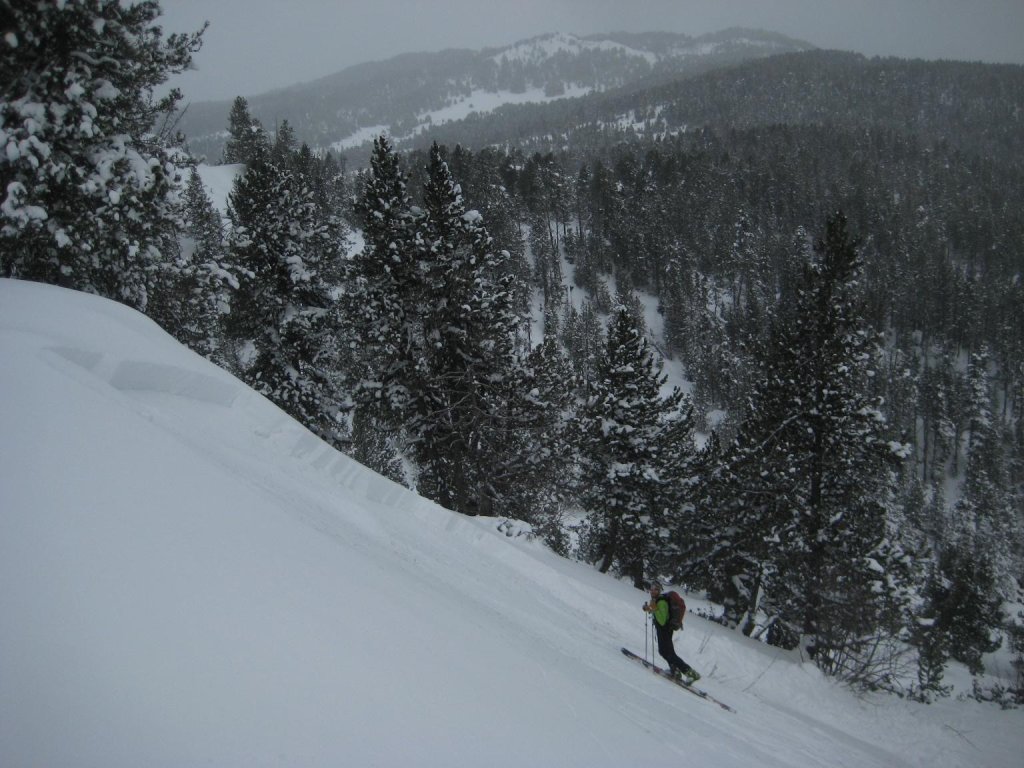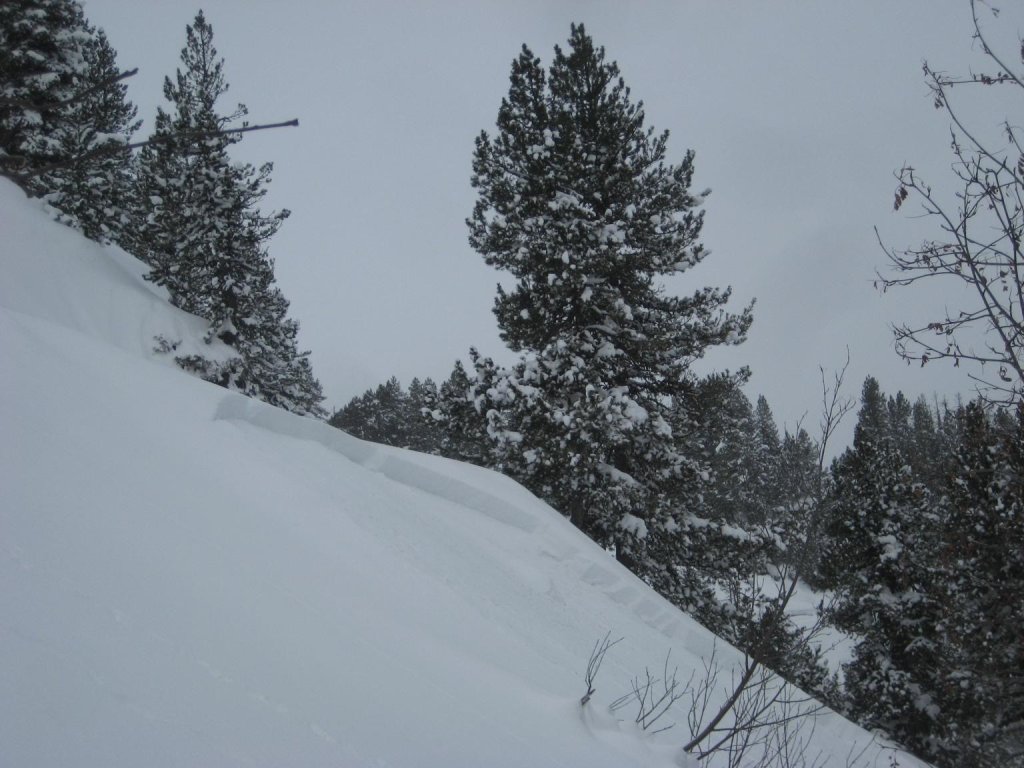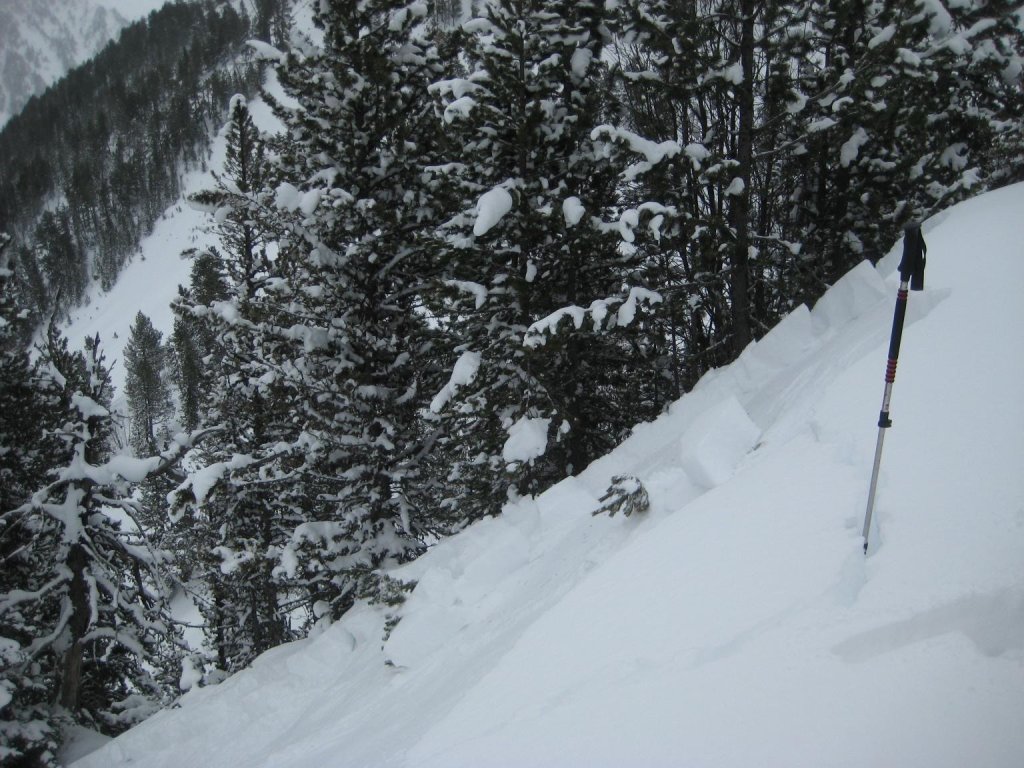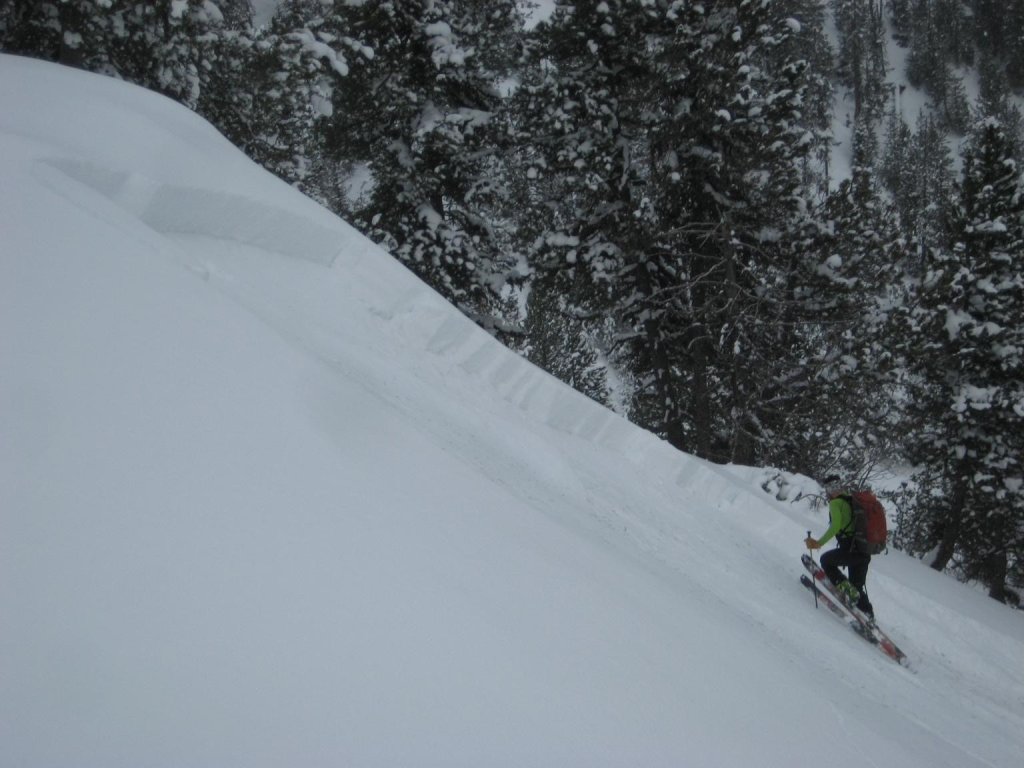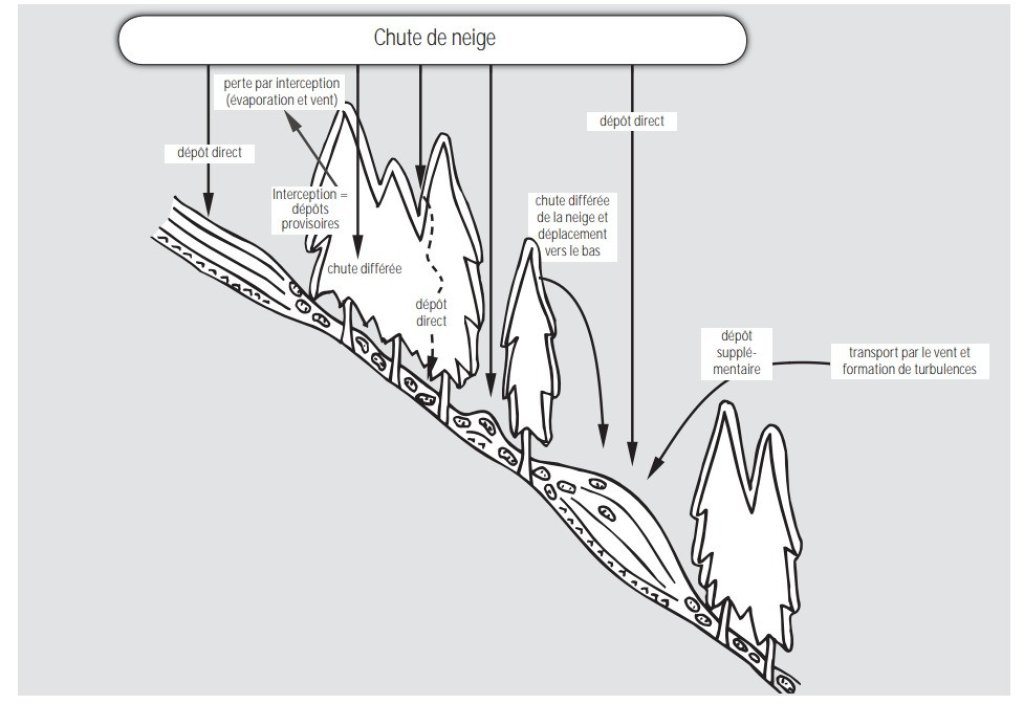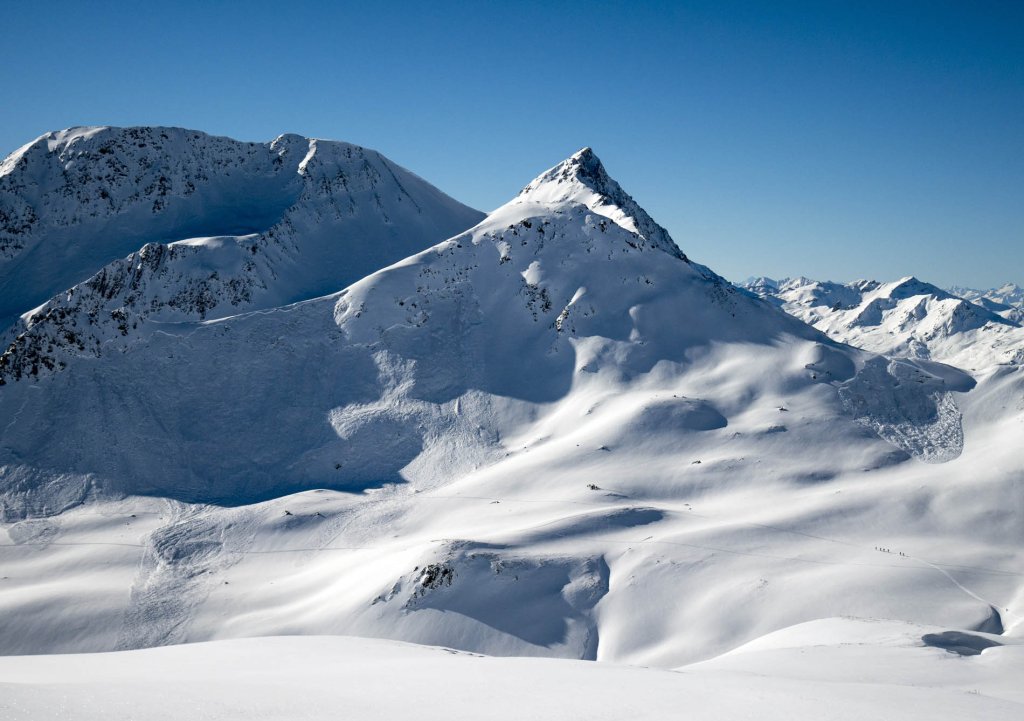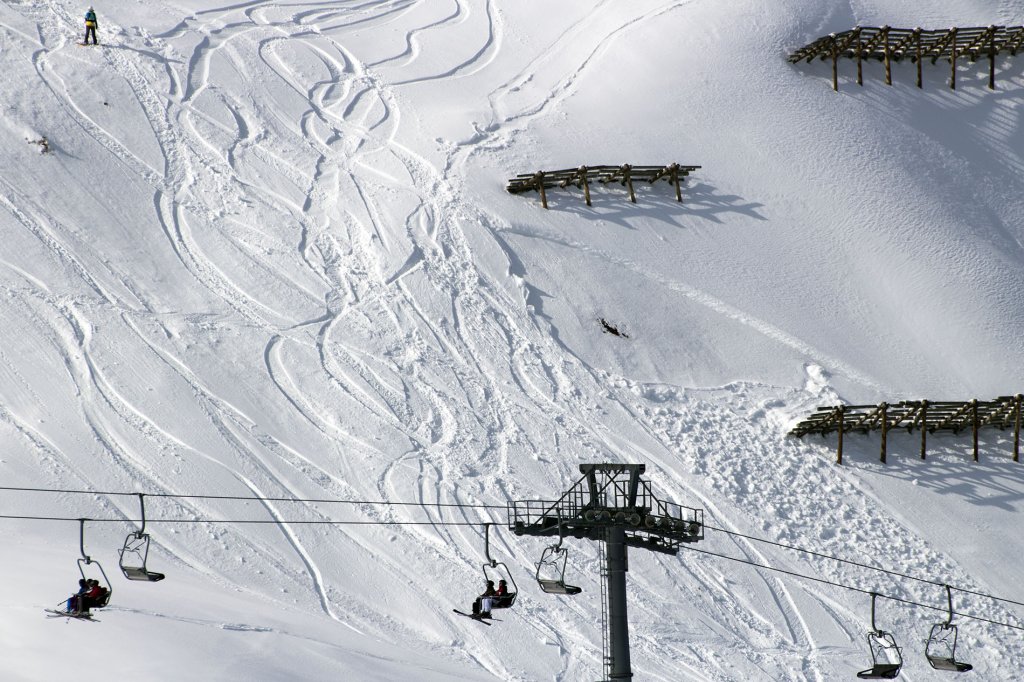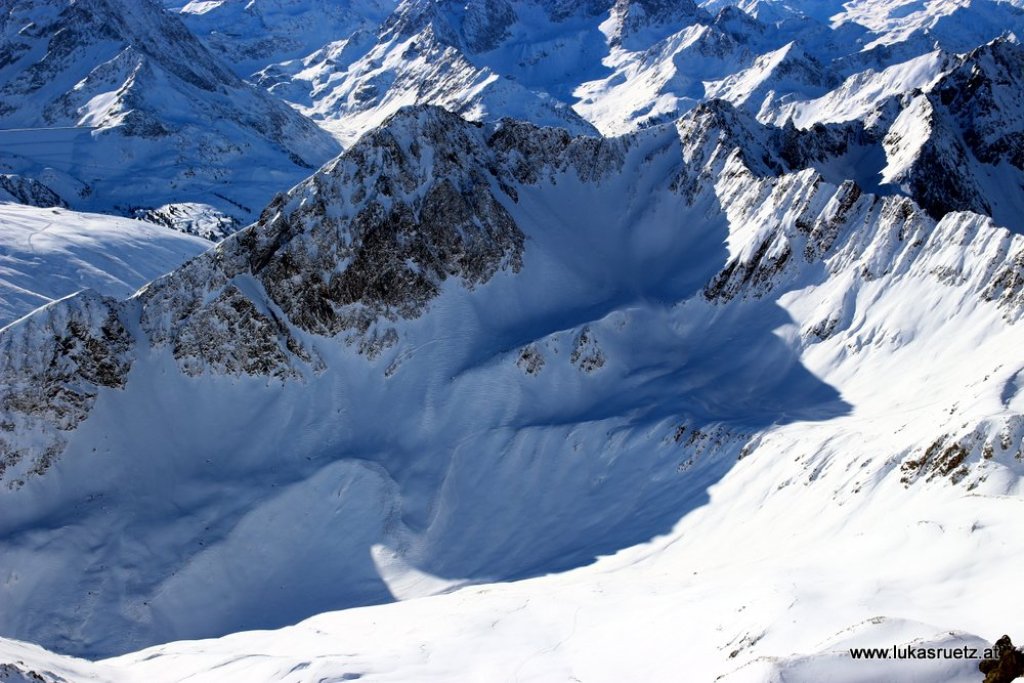Influence of the forest on snowpack stability
In fact, the snow cover in the forest is often very different from that in the surrounding open terrain. This difference varies depending on the type, density, age and composition of the forest.
One of the most obvious influencing factors is snow interception. This describes the effect of the treetops, which collect some of the snow during precipitation. From there, the snow sublimates - i.e. it changes directly from a solid to a gaseous state - or it falls to the ground in the form of snow clumps or meltwater. The snow cover is often less thick as a result of snow interception and the layers are less structured. The layers are therefore more heterogeneous as they are broken up by falling snow. Depending on the type of forest, the amount of snow falling on the ground can be 10-50% less than in the neighbouring treeless terrain. Evergreen conifers, such as the Scots pine, which is widespread in the Alps, have a higher interception rate than deciduous trees that are sparse in winter. In a light-covered deciduous forest, the snow cover structure can therefore only differ slightly from the neighbouring open land.
Another factor influencing the snow cover is the density of the forest. Whether coniferous or deciduous trees, the trunks can have a supporting effect on the snow cover in both cases. However, one can only speak of a complete supporting effect when the density of trees per hectare makes skiing virtually impossible. Depending on the slope inclination, up to 1000 trunks per hectare may be necessary to prevent avalanches in the forest.
A dense forest also acts as a barrier to the wind. Wind is snow drifts and consequently bound snow layers, also known as drifting snow, occur less frequently. In addition, less snow accumulates in gullies and hollows than in forest-free areas due to snow interception and less snow transport within the forest;
The microclimate in the forest also contributes to snowpack stability. The shade provided by the trees reduces the warming of the snow cover during the course of the day. The difference can be up to four degrees compared to the open air. At the same time, the trees warm up during the day and release the heat energy at night. The night-time temperature in the forest can therefore be up to one degree warmer. This microclimate reduces the likelihood of the formation of surface frost, one of the most treacherous weak layers.
In general, the forest therefore offers great potential for stable conditions. Its structure increases the roughness of the ground and thus creates resistance for snow sliding downhill. Nevertheless, it is important to be aware that you can be exposed to all avalanche risks here too and that you should behave accordingly, as the forest can even increase the avalanche risk under certain circumstances.
